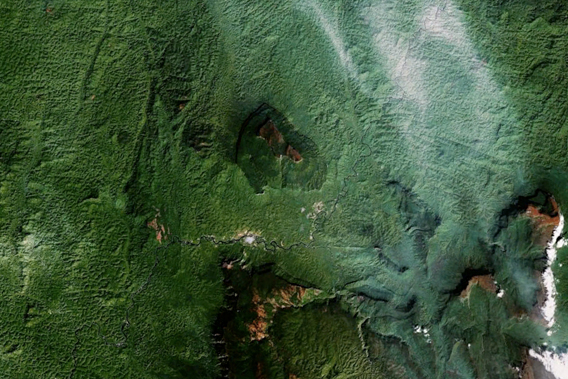
Terra Incognito? Venezuela’s Amazon rainforest (a portion of which is viewed here by Google Earth) has been almost wholly ignored by researchers.
Andean forests even less represented in research than the Amazon.
Although the Amazon is the world’s largest tropical forest, it is not the most well known. Given the difficulty of access along with the fear of disease, dangerous species, indigenous groups, among other perceived perils, this great treasure chest of biology and ecology was practically ignored by scientists for centuries. Over the past few decades that trend has changed, however even today the Amazon remains lesser known than the much smaller, and more secure, tropical forests of Central America. A new study in mongabay.com’s open access journal Tropical Conservation Science, which surveyed two prominent international tropical ecology journals (Biotropica and Journal of Tropical Ecology) between 1995 and 2008, finds that Central America was the subject of twice as many studies as the Amazon. In fact, according to the authors, much of the Amazon remains terra incognito to researchers, even as every year more of the rainforest is lost to human impacts.
“The largest stand of white-sand forest in western Amazonia was first visited by scientists in 2004. The bamboo thickets of southwestern Amazonia, which cover an area larger than the United Kingdom, remain essentially unexamined,” write the authors. “The same is true for the swamps and wetlands that cover 6-8 percent of the Amazon basin, aquatic ecosystems across the continent, and most of the eastern slopes of the Andes.”
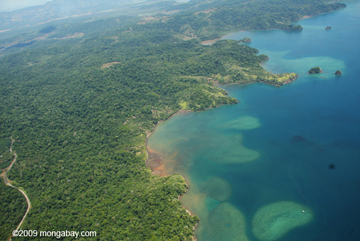 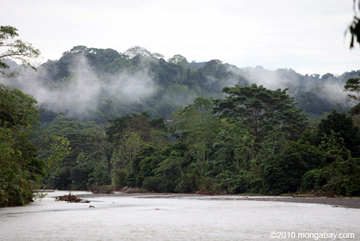 Top: coastal forests of Costa Rica. Bottom: Amazon rainforest scene in Colombia. According to the paper from 1995 to 2008 there have been nearly as many studies of the tropical forests of Costa Rica as the entirety of the Amazon ecosystem. Photos by: Rhett A. Butler. |
“While field work in Peru’s Madre de Dios watershed has produced more than 800 articles in peer-reviewed biology journals to date, the corresponding number for the neighboring and similarly-sized Alto Purús watershed [also in Peru] is nine,” the authors write.
Not surprisingly, certain Amazonian countries were more focused on while others have been largely ignored. Almost half (49%) of the Amazon studies were undertaken in Brazil. In contrast 1.6% of Amazonian studies occurred in Venezuela.
“A working understanding of South America’s tropical forests does not require that biologists visit every last creek and hilltop, or study every watershed with equal intensity, but it does require that they have a clear picture of the biases that derive from the patchwork exploration of the landscape,” the researchers write.
Research in the Amazon was also largely conducted by foreigners: over a third of the Amazonian studies were undertaken by US researchers and over a quarter by Europeans. Brazil makes up most of the difference (23%) while only 6% of research in the Amazon is done by non-Brazilian South Americans.
The Amazon is in second place for tropical research, followed closely by third place, Southeast Asia, and fourth Africa. But no-where is so underrepresented as the Andean tropics.
The Andes: even lesser known
While studies in the Amazon still lag behind research in Central America, the forests of the Andes are the undisputed losers. Six times more studies were conducted in Central America than in the Andes, in fact, more studies were written about the island of Puerto Rico than all of the Andean regions.
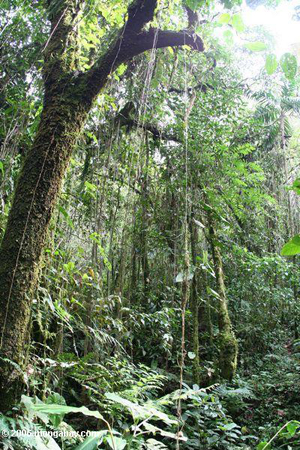 Andean cloud forest in Colombia. Photo by: Rhett A. Butler. |
According to the paper some areas of the Andes were neglected altogether: “no studies were recorded in large ecoregions of the central and southern Andes (e.g., central Andean dry puna, central Andean puna, Peruvian yungas).”
Like the Amazon, the Andes are usually researched by non-native scientists. Over half of the research done in the Andes was conducted by Europeans with Germans publishing more studies on the Andes than researchers from all of the Andean countries combined.
“The Andean range—the undisputed epicenter of global biodiversity and endemism—remains one of the least-studied tropical regions on the planet,” write the authors.
Given the dearth of research in the Amazon and the Andes, the paper calls for “a significant boost in overall research effort and a more equitable geographical coverage in field research.”
The researchers argue that funding is key to increasing and diversifying studies in the Amazon and Andes.
“The entities best positioned to make these changes are likely international funding agencies and national-level institutions like universities, museums, government science agencies, and [NGOs),” the authors write, adding that grants should be made available for studies specifically focusing on the Amazon or the Andes.
Field stations also require better support to stay active.
“In the long term, the most cost-effective way to maintain the scientific productivity of [field stations] is via endowments or grant programs that subsidize their operating expenses for long periods,” the authors write.
More investment should also be made in educating and training scientists in the regions. But, according to the researchers, this isn’t just the responsibility of Amazonian-Andean countries.
“Visiting foreign researchers can do more to boost training opportunities for young South American biologists by designing collaborative research programs, offering training courses, and ensuring that young in-country collaborators take an active role in data analysis and manuscript preparation.”
In good news, the authors did find that studies in the Amazon and Andes were growing, albeit very slowly. Central America is likely to remain the undisputed king of tropical studies for some time to come.
“At the rates of growth measured in our dataset, it will take the Andes-Amazon region [around] 120 years to reach the current productivity of Central America, ” the authors conclude.
CITATION: Pitman, N. C. A., Widmer, J., Jenkins, C. N., Stocks, G., Seales, L., Paniagua, F. and Bruna, E. 2011. Volume and geographical distribution of ecological research in the Andes and the Amazon, 1995-2008. Tropical Conservation Science Vol. 4 (1):64-81.
Related articles
Life shocker: new species discovered every three days in the Amazon
 (10/26/2010) A new report by the World Wide Fund for Nature (WWF) confirms the Amazon rainforest, even as it is shrinking due to deforestation, remains among the world’s most surprising places. According to the report, Amazon Alive, over the past decade (1999-2009) researchers have found 1,200 new species in the Amazon: one new species for every three days. Not surprisingly invertebrates, including insects, made up the bulk of new discoveries. But no type of species was left out: from 1999-2009 researchers discovered 637 new plants, 357 fish, 216 amphibians, 55 reptiles, 39 mammals, and 16 new birds. In new discoveries over the past decade, the Amazon has beaten out a number of high-biodiversity contenders including Borneo, the Eastern Himalayas, and the Congo rainforest.
(10/26/2010) A new report by the World Wide Fund for Nature (WWF) confirms the Amazon rainforest, even as it is shrinking due to deforestation, remains among the world’s most surprising places. According to the report, Amazon Alive, over the past decade (1999-2009) researchers have found 1,200 new species in the Amazon: one new species for every three days. Not surprisingly invertebrates, including insects, made up the bulk of new discoveries. But no type of species was left out: from 1999-2009 researchers discovered 637 new plants, 357 fish, 216 amphibians, 55 reptiles, 39 mammals, and 16 new birds. In new discoveries over the past decade, the Amazon has beaten out a number of high-biodiversity contenders including Borneo, the Eastern Himalayas, and the Congo rainforest.
Stunning monkey discovered in the Colombian Amazon
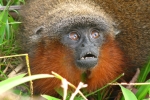 (08/11/2010) While the Amazon is being whittled away on all sides by logging, agriculture, roads, cattle ranching, mining, oil and gas exploration, today’s announcement of a new monkey species proves that the world’s greatest tropical rainforest still has many surprises to reveal. Scientists with the National University of Colombia and support from Conservation International (CI) have announced the discovery of a new monkey in the journal Primate Conservation on the Colombian border with Peru and Ecuador. The new species is a titi monkey, dubbed the Caquetá titi ( Callicebus caquetensis). However, the announcement comes with deep concern as researchers say it is likely the new species is already Critically Endangered due to a small population living in an area undergoing rapid deforestation for agriculture.
(08/11/2010) While the Amazon is being whittled away on all sides by logging, agriculture, roads, cattle ranching, mining, oil and gas exploration, today’s announcement of a new monkey species proves that the world’s greatest tropical rainforest still has many surprises to reveal. Scientists with the National University of Colombia and support from Conservation International (CI) have announced the discovery of a new monkey in the journal Primate Conservation on the Colombian border with Peru and Ecuador. The new species is a titi monkey, dubbed the Caquetá titi ( Callicebus caquetensis). However, the announcement comes with deep concern as researchers say it is likely the new species is already Critically Endangered due to a small population living in an area undergoing rapid deforestation for agriculture.
Hunting threatens the other Amazon: where harpy eagles are common and jaguars easy to spot, an interview with Paul Rosolie
